Meet the Mirfield music man who specialises in making and repairing instruments
and live on Freeview channel 276
He was bored with his IT job and having performed in various bands since his teens, he wanted to learn how to make the instruments he enjoyed playing.
“I played double bass but I had a rubbish instrument and because I couldn’t afford to buy a decent one I thought it would be fun to try and make one,” he said. “It was just meant to be a hobby, but when I saw people who were doing it full-time I thought ‘I really want to do this’.”
Advertisement
Hide AdAdvertisement
Hide AdSo he did. He quit his job, moved from Sheffield to Newark and enrolled full time at the violin-making school.
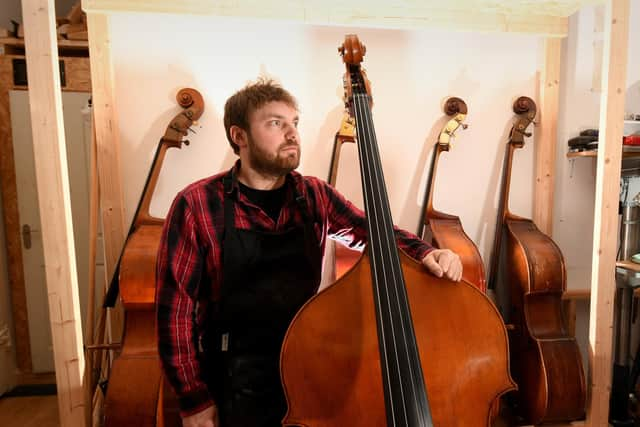

After graduating four years later he spent time training with master luthiers (derived from the French word for lute-makers) in France and England, before setting up his own workshop back in Sheffield in 2016, repairing and making musical instruments.
In 2019 he moved his business, Heppleston Lutherie, to Holme Bank Mills, in Mirfield. The cotton mills were part of West Yorkshire’s fabled textile industry in the 19th century and latterly have been transformed into a family-run complex that are now home to a wide range of independent businesses.
“It’s a great little community,” said Neal. “There’s all sorts of people. There’s an upholsterer, someone who makes tanks for brewing and a rug maker. You get to know a few different people, which is nice.”
Advertisement
Hide AdAdvertisement
Hide AdNeal’s fascination with musical instruments was evident from an early age and encouraged by his music teacher at school. Having learned to play the piano and guitar, his interest in jazz music, and in particular Charles Mingus, drew him towards the double bass. And by the time he had moved from High Wycombe to Sheffield, where he studied project management at university, he was already a proficient bass player.
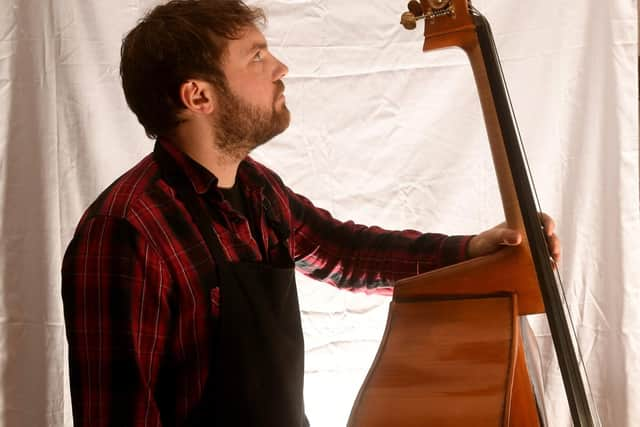

He still plays today, has recently come back from touring with folk musician Jim Ghedi, and also makes his own experimental music.
But his day job is repairing and making instruments. He has repaired violins and cellos but his work now is almost exclusively repairing, and making, double basses.
“I’m a bass player and there’s not a lot of people who deal with basses in the UK, probably just a handful, so it seemed like a logical step to focus on double basses,” he said.
Advertisement
Hide AdAdvertisement
Hide AdIt’s an instrument that many people are unfamiliar with. “I get people coming in because they see me through the window and they say, ‘what’s that?’ Someone once said, ‘is that a piano?’ A lot of people don’t know what it is, some think it’s a guitar and others think it’s a violin. It’s not a very well-known instrument outside of the music world.”
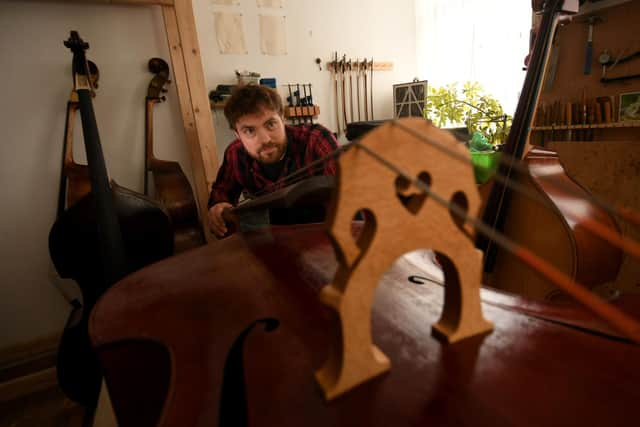

Despite this lack of familiarity, the bass, as it’s also known as, is used in everything from jazz to folk music and rockabilly and is an integral part of any symphony orchestra.
The majority of repairs Neal does are for classical musicians, though he has also done work for the likes of BBC Philharmonic, Leeds-based Opera North and the Hallé Orchestra over the other side of the Pennines. He is also the “go-to” person for Leeds Conservatoire when it comes to repairing instruments.
“I think there are less players than there used to be. Funding for the arts probably isn’t as good as it used to be, and certainly not as good as European funding for their orchestras. But there’s enough work.” And business, he says, has been good, even during the pandemic.
Advertisement
Hide AdAdvertisement
Hide Ad“I was a bit worried during Covid but I was lucky in the fact that people stopped playing and perhaps thought it was a good time to get their instruments fixed.”
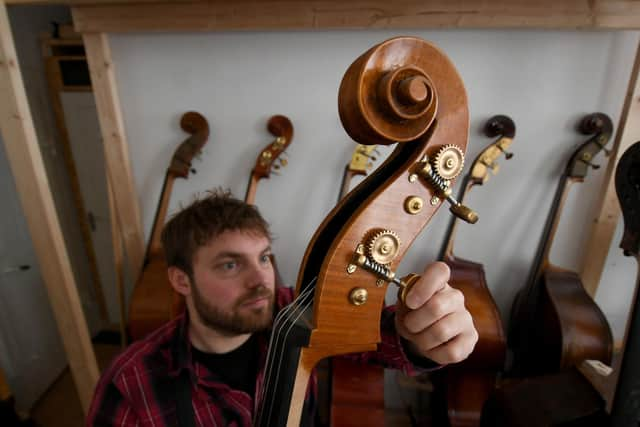

The walls of his small but atmospheric workshop are lined with the tools of his craft – planes, chisels and gouges – proof that a luthier’s equipment (apart from the odd power tool) hasn’t changed all that much over the centuries.
There is also a neat row of basses, including a German instrument dating from the 19th century and a couple that Neil built himself, which are available to buy.
It takes him up to three months to make a double bass from scratch, so he only has time to make one or two each year – a new one would set you back between £16,000 and £18,000. It’s a lot of money, but then you’re paying for craftsmanship and an instrument that will easily outlast its owner.
Advertisement
Hide AdAdvertisement
Hide AdSome of the instruments he repairs date back more than a century.
“The owner thinks this was used as a church bass. It was originally painted black apparently and it was used for funeral services.”
The oldest instrument he’s repaired was a cello. “This cello existed before what we know now as America even existed, which is incredible. My mum’s from America so it was interesting telling her about it and saying, ‘I’ve got a cello that’s older than your country.’”
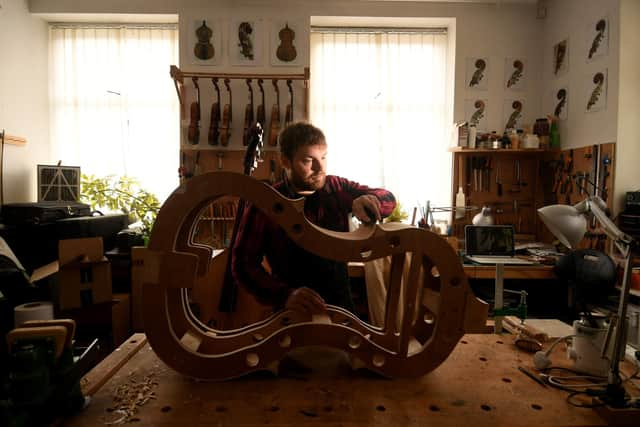

The time it takes to repair an instrument depends on the extent of the damage which means it can involve anywhere from a day to several months, with cracks in the wood the most common problem. “Double bass have a soft wood front and hard wood back and sides, it’s the same with violins and cellos. The spruce wood is a soft wood so it does crack.”
So what makes a great instrument?
Advertisement
Hide AdAdvertisement
Hide Ad“It’s a combination of a lot of different things; it’s the quality of the wood, how well the front and back are carved, and the set-up, which is the bridge and where the strings are, becauseif that’s bad then the instrument will sound bad.”
The varnish, too, can make a difference. “Different varnishes can change the sound. I started off using spirit varnish, which dries very quickly and is very thin, and you need a lot of coats. I’ve started using oil varnish now and that’s thicker and you only need about three coats and it makes the sound warmer.”
He shows me his varnish room, which is a bit like a tanning cubicle, where the instruments are given repeated coats. “In Italy they use the sun but here we use UV with tanning lamps.”
Making, or repairing, an instrument, Neal tells me, follows three basic stages. The first involves shaping and hollowing the wood and gluing the instrument’s frame together; when the bare wood, what’s known as being “in the white”, is ready it’s off to be varnished and, once this has been done and the varnish has dried, the final stage is the crucial set-up, which involves adding the bridge and the nut, as well as the fingerboard and soundpost.
Advertisement
Hide AdAdvertisement
Hide AdFor Neal, making an instrument from scratch is hugely rewarding.
“It’s the process more than anything – it’s making it, sculpting it and completing it,” he says. “Sometimes I’ll take a step back and think ‘Wow, who else knows how to stick a neck in a double bass?’ Not many, and sometimes it’s good to remind myself that it’s a pretty impressive job and that I’m lucky to be able to make a living out of it.”
To find out more about Neal Heppleston, visit https://www.hepplestonlutherie.co.uk/doublebasses. For more details about Holme Bank Mills, Mirfield, go to https://holmebankmills.co.uk/